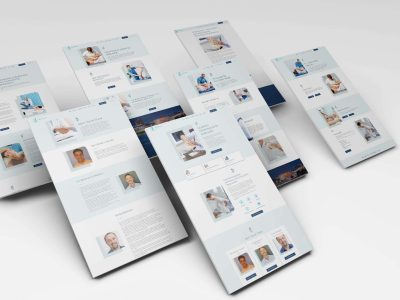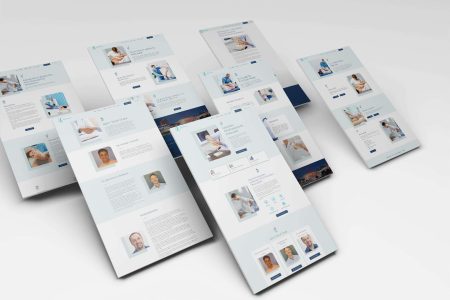In today’s competitive market, small businesses need to leverage every advantage to stand out. Understanding AI in design is crucial as artificial intelligence is reshaping how companies approach branding, providing powerful tools and innovative techniques previously unavailable. The importance of strong branding for small businesses cannot be overstated, as it creates a lasting impression and fosters customer loyalty. How AI is changing the design landscape is particularly evident in the breadth of AI tools every small business should know. These tools offer cost-effective AI solutions for small business branding, enabling even limited budgets to achieve professional-level design. To illustrate, various case studies highlight the success stories of AI-driven branding in real-world applications. By integrating AI into your current branding strategy, businesses can gain a competitive edge while overcoming challenges with AI in design along the way. Looking ahead, future trends in AI and small business branding promise even more advancements, making it essential to stay informed and adaptable. As we explore these themes, we’ll uncover how small businesses can maximize their branding potential with AI.
Content
Understanding AI in Design: A Quick Overview
What is AI in Design?
Artificial Intelligence in design refers to the use of machine learning algorithms and neural networks to automate or enhance various design processes. AI can generate design layouts, suggest color palettes, create logos, and even write copy. This technology leverages vast amounts of data to learn patterns and preferences, enabling it to make design decisions that resonate with target audiences. The main advantage of AI in design is its ability to perform repetitive tasks quickly and accurately, freeing up human designers to focus on more creative and strategic aspects. By understanding AI’s capabilities, businesses can harness these tools to streamline their branding efforts.
Benefits of AI in Design
AI in design offers numerous benefits, particularly for small businesses looking to establish a strong brand presence. The most significant advantage is efficiency; AI tools can produce high-quality designs rapidly, reducing the time and cost typically associated with manual design work. Additionally, AI can provide data-driven insights, helping businesses understand what design elements resonate most with their audience. This leads to more effective branding and marketing strategies. AI also allows for greater personalization, enabling businesses to tailor their branding efforts to individual customer preferences. Overall, AI enhances design quality, consistency, and relevance, giving small businesses a competitive edge.
AI vs. Traditional Design Methods
Traditional design methods rely heavily on human creativity and intuition, which, while invaluable, can be time-consuming and subject to personal bias. AI, on the other hand, offers a data-driven approach, analyzing massive datasets to identify trends and preferences. This can result in designs that are more aligned with current consumer tastes and behaviors. While traditional methods allow for a deeper emotional connection and originality, AI excels in speed, consistency, and scalability. Businesses don’t have to choose one over the other; instead, combining both methods can result in a more balanced and effective design strategy that leverages the strengths of each.
The Importance of Strong Branding for Small Businesses
Strong branding is essential for small businesses as it helps to establish a distinct identity in a crowded market. A strong brand allows customers to recognize and remember a business, fostering trust and loyalty. When customers see consistent branding across various touchpoints—whether it’s the logo, website, or social media—they’re more likely to develop a positive perception of the business. This recognition and trust can translate into repeat customers, word-of-mouth recommendations, and ultimately, increased sales. In today’s competitive landscape, having a robust brand identity is not just desirable but necessary for survival and growth.
Furthermore, strong branding can significantly impact a small business’s marketing efforts. With a clear and compelling brand, marketing messages become more effective and engaging. This cohesion ensures that all marketing strategies—from social media campaigns to email newsletters—work together to promote a unified image, making each effort more powerful and impactful. A well-defined brand makes it easier for businesses to communicate their values, mission, and unique selling propositions to their target audience. This clarity not only attracts new customers but also helps to retain existing ones, creating a loyal customer base that advocates for the brand.
Another crucial aspect is the competitive advantage that strong branding provides. In sectors where products or services may be similar, branding can be the differentiator that sets one business apart from another. A distinctive brand can convey quality, reliability, and professionalism, making it easier for customers to choose that business over competitors. Additionally, strong branding can command higher prices as customers are often willing to pay a premium for brands they trust and value. For small businesses with limited resources, investing in branding can yield significant returns, both in terms of customer loyalty and financial performance.
How AI is Changing the Design Landscape
AI-Driven Automation in Design
AI-driven automation is revolutionizing the design landscape by streamlining tasks that were once labor-intensive and time-consuming. Tools powered by machine learning can generate high-quality design elements such as logos, flyers, and social media graphics in a fraction of the time it would take a human designer. This automation extends to more complex tasks like website design, where AI can create responsive, aesthetically pleasing layouts based on user preferences and behavior. By taking over repetitive and mundane aspects of design, AI allows human designers to focus on more strategic and creative activities, ultimately leading to more innovative and effective outcomes.
Personalization and Customization
One of the most significant shifts brought about by AI in the design world is the ability to deliver highly personalized and customized experiences. AI algorithms analyze user data to understand individual preferences, enabling businesses to tailor their branding efforts to specific audience segments. For example, AI can recommend color schemes, fonts, and design styles that are more likely to resonate with a target demographic. This level of personalization not only makes marketing materials more appealing but also increases engagement and conversion rates. By leveraging AI, small businesses can compete with larger companies in delivering bespoke, customer-centric designs.
Predictive Design and Trend Analysis
AI is also making waves in predictive design and trend analysis, offering businesses a proactive approach to their branding strategies. By analyzing massive datasets, AI can identify emerging design trends and predict what styles will be popular in the future. This foresight allows businesses to stay ahead of the curve, ensuring that their branding remains fresh and relevant. Moreover, AI can provide insights into how different design elements will perform based on historical data, enabling more informed decision-making. This predictive capability helps small businesses to innovate and adapt quickly, ensuring they not only keep pace with design trends but also set new benchmarks in their industry.
Transform your business with custom AI solutions from a leading Artificial Intelligence Agency.
AI Tools Every Small Business Should Know
One essential AI tool for small businesses is Canva. Canva utilizes machine learning to offer design recommendations and automate various design tasks, making it incredibly user-friendly even for those with little to no design experience. Featuring an extensive library of templates, images, and fonts, it allows users to create professional-quality graphics for social media, marketing materials, and more. Canva also offers a user-friendly interface that streamlines the design process, making it quicker and more efficient. By leveraging AI technologies, Canva helps small businesses save time and resources while maintaining high design standards.
Another valuable AI tool is Adobe Sensei, integrated into Adobe’s suite of creative applications like Photoshop, Illustrator, and Premiere Pro. Adobe Sensei employs artificial intelligence and machine learning to automate repetitive tasks and enhance design capabilities. For example, it can intelligently remove backgrounds, suggest design layouts, and even predict which assets will likely be most popular based on user trends. These features not only speed up the design process but also elevate the quality of the final output, giving small businesses access to advanced design tools that were once available only to larger organizations with specialized teams.
Logojoy is another AI-driven design tool that small businesses should consider. Specializing in logo creation, Logojoy uses AI to generate a variety of logo options based on user inputs such as preferred colors, styles, and symbols. The AI algorithm then creates diverse logo designs, allowing businesses to choose the one that best fits their brand identity. This tool is particularly beneficial for startups and small businesses that might not have a dedicated design team but still want a professional and unique logo. By providing a wide range of design options at an affordable price, Logojoy makes high-quality branding accessible to businesses of all sizes.
Experience effortless, cost-effective social media management with AI technologies
Cost-Effective AI Solutions for Small Business Branding
AI-Powered Graphic Design Tools
AI-powered graphic design tools like Canva and Adobe Spark offer cost-effective solutions for small businesses looking to enhance their branding without breaking the bank. These tools utilize machine learning algorithms to provide users with a wide variety of templates, design elements, and customization options. With easy-to-use interfaces and intuitive design recommendations, businesses can quickly create professional-quality graphics for social media, websites, and marketing materials. These AI tools often come with affordable subscription plans, making them accessible to small businesses with limited budgets. By leveraging these resources, businesses can save on hiring costs while maintaining a strong and consistent brand image.
AI-Driven Brand Analytics
AI-driven brand analytics platforms, such as Hootsuite Insights and Brandwatch, provide small businesses with valuable insights into their branding efforts at an affordable cost. These tools analyze social media interactions, customer feedback, and market trends to offer actionable data that can guide branding strategies. By understanding which elements of their brand resonate most with their audience, businesses can make informed decisions about design and communication. These platforms often employ machine learning algorithms to predict future trends and consumer behaviors, helping businesses stay ahead of the curve. The cost-effectiveness of these AI-driven analytics tools lies in their ability to optimize branding efforts, thereby maximizing return on investment.
AI-Based Customer Interaction Tools
AI-based customer interaction tools, such as chatbots and virtual assistants, offer an economical way for small businesses to enhance their customer service and engagement. Tools like Drift and Chatfuel use natural language processing to interact with customers in real-time, answering queries, providing recommendations, and even assisting with purchases. These AI-driven solutions can be integrated into websites and social media platforms, offering around-the-clock support without the need for a large customer service team. This not only improves the customer experience but also frees up resources that can be allocated to other areas of the business. By automating customer interactions, small businesses can maintain high levels of service while keeping costs down.
Case Studies: Success Stories of AI-Driven Branding
One notable success story is that of The Grid, an AI-driven web design platform that revolutionized how small businesses create and manage their online presence. Utilizing machine learning algorithms, The Grid could design websites tailored to the individual needs and preferences of its users. Small businesses benefited greatly from this technology, as it allowed them to create professional, aesthetically pleasing, and functional websites without needing extensive design knowledge or a large budget. The platform’s ability to adapt and evolve based on user interactions significantly improved user engagement and customer satisfaction, demonstrating the powerful impact of AI in branding and web design.
Another compelling case study is the beverage company Coca-Cola, which used AI to enhance its branding and consumer engagement strategies. By analyzing vast amounts of data from social media and customer interactions, Coca-Cola employed AI algorithms to understand consumer behavior and preferences deeply. This led to more personalized and effective marketing campaigns, resonating well with target audiences. For instance, the “Share a Coke” campaign was a tremendous success as AI helped tailor the initiative to different demographics and regions. This case highlights how small businesses can take inspiration from large corporations in using AI to achieve more targeted and impactful branding strategies.
A smaller-scale but equally impressive success story is that of Lola, a fashion brand that used AI to enhance its design processes and customer interactions. Lola implemented an AI-powered chatbot to assist customers with product recommendations based on their browsing history and preferences. This not only improved the shopping experience but also provided valuable insights into consumer trends that influenced future design decisions. Additionally, AI-driven analytics helped Lola optimize its inventory and supply chain management, reducing costs and increasing efficiency. The brand’s ability to leverage AI for both customer engagement and operational improvements exemplifies how small businesses can use technology to drive growth and innovation in their branding efforts.
Elevate your business with DIGITALON AI’s custom AI services and solutions.
Integrating AI into Your Current Branding Strategy
Assessing Your Branding Needs
Before integrating AI into your branding strategy, it’s crucial to assess your current branding needs and objectives. Begin by conducting a thorough analysis of your existing brand elements, such as your logo, color schemes, and messaging. Identify areas where AI can add the most value, whether it’s in design automation, customer interaction, or data analytics. Understanding your specific branding challenges and goals will help you choose the right AI tools and applications. For instance, if you’re looking to enhance customer engagement, AI-powered chatbots or personalized marketing platforms might be the best fit. A clear assessment will ensure that your AI integration aligns with your overall branding strategy.
Choosing the Right AI Tools
Once you’ve identified your branding needs, the next step is to choose the right AI tools that align with your objectives. There are various AI solutions available, each designed to address different aspects of branding. For web design and graphic creation, tools like Canva and Adobe Sensei offer robust features that can streamline your design processes. If you’re looking to enhance customer interactions, consider implementing AI chatbots such as Drift or customer service platforms like Zendesk. Additionally, AI-driven analytics tools like Hootsuite Insights can provide valuable data to refine your branding strategies. Selecting the appropriate AI tools will ensure a seamless integration that amplifies your branding efforts.
Implementing and Monitoring AI Solutions
After selecting the appropriate AI tools, it’s essential to implement them effectively and monitor their performance continuously. Start by integrating these tools into your existing platforms and workflows, ensuring that your team is well-trained and comfortable with the new technology. Set clear metrics to evaluate the impact of AI on your branding efforts, such as customer engagement rates, design efficiency, and overall brand sentiment. Regularly review these metrics to identify areas for improvement and make necessary adjustments. Continuous monitoring and iteration are key to maximizing the benefits of AI in your branding strategy, helping you stay adaptive and responsive to evolving market trends and consumer preferences.
Overcoming Challenges with AI in Design
One of the primary challenges in integrating AI into design is the initial learning curve associated with understanding and utilizing the technology effectively. Many small business owners and their teams may not have prior experience with AI tools, which can lead to a sense of intimidation or reluctance to adopt new systems. Overcoming this challenge requires investing time in training and educating staff about the benefits and functionalities of AI-driven design tools. Many platforms offer tutorials, webinars, and customer support to help users get up to speed. By fostering a culture of learning and experimentation, businesses can gradually build confidence and proficiency in using AI to enhance their design processes.
Another significant challenge is ensuring that AI-driven designs still reflect the unique brand voice and identity of the business. While AI can generate designs quickly and efficiently, these outputs may sometimes lack the distinctiveness and emotional connection that human designers can achieve. To address this, businesses should use AI tools as a complement rather than a replacement for human creativity. By setting clear guidelines and parameters for AI-generated content, and by involving human designers in the final review and refinement stages, businesses can maintain the authenticity and uniqueness of their brand while leveraging the efficiency of AI.
Data privacy and security are also major concerns when using AI technologies, especially in design processes that involve customer data and proprietary information. Businesses must ensure that they are in compliance with data protection regulations and that any AI tools they adopt have robust security measures in place. This includes using encryption, securing access to sensitive data, and regularly updating software to protect against vulnerabilities. By implementing comprehensive data security protocols and choosing reputable AI providers, small businesses can mitigate the risks associated with data breaches and ensure that their branding efforts are both innovative and secure.
Future Trends: AI and Small Business Branding
Hyper-Personalized Marketing
Hyper-personalized marketing is set to become a major trend as AI technology continues to evolve. By leveraging advanced machine learning algorithms, small businesses can deliver highly tailored marketing messages that resonate with individual customers. AI tools analyze vast amounts of data, including browsing behavior, purchase history, and social media interactions, to craft personalized content and product recommendations. This level of customization enhances customer engagement and loyalty, making marketing efforts more effective. For small businesses, hyper-personalized marketing allows for a more targeted approach, ensuring that every interaction is relevant and meaningful, thereby maximizing return on investment and fostering stronger customer relationships.
Voice Search Optimization
As voice-activated assistants like Alexa, Google Assistant, and Siri become increasingly popular, optimizing for voice search is rapidly gaining importance in branding strategies. AI-driven voice search technology allows users to find products, services, and information through natural language queries. For small businesses, incorporating voice search optimization into their branding efforts can improve online visibility and accessibility. This involves using conversational keywords, optimizing local listings, and ensuring that online content is easily readable by voice assistants. By staying ahead of this trend, small businesses can attract more voice search traffic and provide a seamless user experience, helping them stand out in a competitive market.
AI-Driven Customer Insights
Future advancements in AI technology will offer even deeper customer insights, allowing small businesses to refine their branding strategies with unprecedented precision. AI tools will go beyond basic analytics to provide nuanced understandings of customer preferences, behaviors, and sentiment. By analyzing complex datasets, AI can uncover patterns and trends that may not be immediately apparent, offering actionable insights for branding and marketing initiatives. These insights will enable small businesses to anticipate customer needs, tailor their offerings, and create more compelling brand stories. Leveraging AI-driven customer insights will be crucial for small businesses aiming to stay competitive and responsive to ever-changing consumer landscapes.
Conclusion: Maximizing Your Branding Potential with AI
Integrating AI into your branding strategy offers small businesses unparalleled opportunities to streamline operations, increase efficiency, and create more personalized customer experiences. With AI-powered tools, businesses can automate repetitive tasks, thereby freeing up valuable time and resources that can be redirected towards more strategic activities. AI can also help in generating high-quality design elements rapidly, ensuring that your branding remains consistent and professional across all touchpoints. By embracing AI technology, small businesses can achieve a level of sophistication that was previously accessible only to larger enterprises with extensive resources.
Moreover, AI provides actionable insights that can significantly enhance decision-making processes. Through advanced analytics, AI tools can analyze customer behavior, monitor market trends, and predict future consumer preferences. This data-driven approach allows businesses to fine-tune their branding strategies, ensuring that they are always aligned with the needs and interests of their target audience. As a result, businesses can create more relevant and impactful marketing campaigns that resonate with consumers on a deeper level, fostering loyalty and driving growth.
However, the key to maximizing your branding potential with AI lies in effectively balancing technology with human creativity. While AI can handle many technical tasks, the emotional and relational aspects of branding still benefit greatly from human input. Therefore, businesses should view AI as a complementary tool that enhances rather than replaces human capabilities. By combining the strength of AI-driven insights and automation with human ingenuity and creativity, small businesses can create powerful and memorable brands that stand out in today’s competitive landscape.























